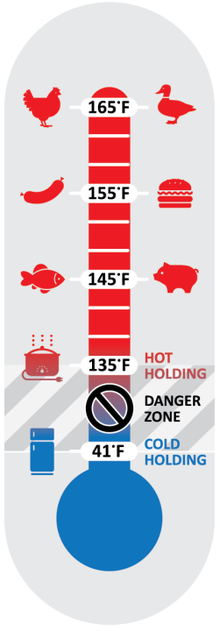Quick facts
- Cut fresh fruits are not allowed as a decorative topping on homemade baked goods.
- Whole, uncut, fresh fruits are allowed to be used as decorative toppings.
- Cut or whole, dried, dehydrated or freeze-dried fruits are allowed as decorative toppings, so long as the water activity of the final product is 0.85 or below.
- Whole or cut fruits are allowed as ingredients in baked goods, like scones, that are fully cooked.
Cottage Food producers may be interested in using fresh or raw, cut fruit as a decorative topping on homemade baked goods. The Cottage Foods Exemption law permits individuals to make and sell only non-potentially hazardous foods. Fresh or raw, cut fruit is a potentially hazardous food because it requires refrigeration to prevent the growth of bacteria that may cause illness when eaten. A potentially hazardous food can support the rapid and progressive growth of infectious or toxigenic microorganisms.
Fresh or raw, cut fruit cannot be used in cottage foods as decoration. An alternative for Cottage Food producers is to use dried, dehydrated or freeze-dried fruits as decorative toppings as long as the final product's water activity (aw) is 0.85 or below.
Fresh whole or cut fruits are allowed as ingredients in baked goods, such as scones, because the cooking process provides enough heat to kill potentially illness-causing microorganisms that were present on the raw fruit.
Time and temperature control for food safety
Potentially hazardous foods that require cold or hot holding are called TCS (time/temperature control for safety) foods. These foods need to be held cold below 41°F or hot above 135°F for a period of time to limit the growth of microorganisms that can cause illness when eaten. These temperatures are outside of the Temperature Danger Zone.
The Temperature Danger Zone is between 41°F and 135°F. This temperature range is ideal for pathogen (illness-causing bacteria) growth. For example, some pathogens will double in number every 15 to 20 minutes in this zone. The risk of foodborne illness increases as the number of pathogens grows.
Microorganisms such as pathogens, molds and toxin-producing bacteria require certain factors to promote growth. These factors, abbreviated as FATTOM, are food, acid, time, temperature, oxygen and moisture. Controlling these factors minimizes the growth of these harmful microorganisms.
For whole fresh or raw fruit, the rind, peel or skin acts as a physical barrier against harmful microorganisms. Once the rind, peel or skin is broken by cutting, harmful microorganisms remaining on the fruit exterior (even after washing) can be transferred to the flesh of the fruit. The flesh of the fruit is high in moisture and contains sugars and starches that are a food source for harmful microorganisms.
The acidity (pH) alone of the cut fruit is not able to prevent the growth of microorganisms. Holding cut produce at 41°F or below minimizes the growth of these microorganisms. The microorganisms can be destroyed during processing with heat treatment.
Minnesota Rules, part 4626.0020, Subp. 90a. Time/temperature control for safety food (TCS). https://www.revisor.mn.gov/rules/4626.0020/
Minnesota Department of Health. Temperature and Time Requirements for Food. 2019. https://www.health.state.mn.us/communities/environment/food/docs/fs/timetempfs.pdf
Reviewed in 2023


